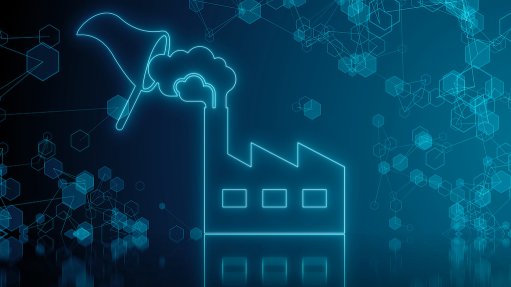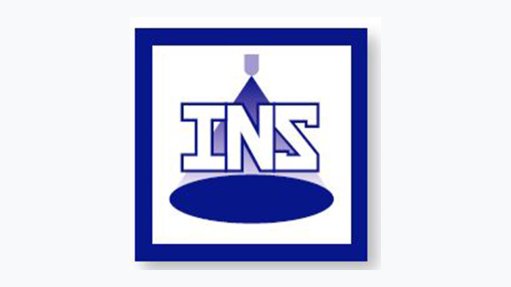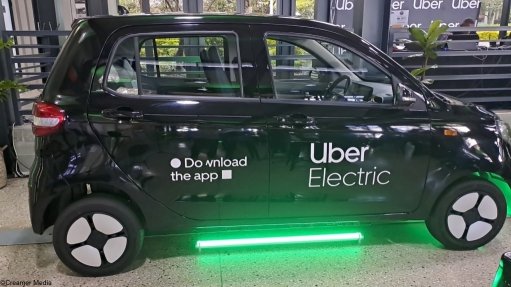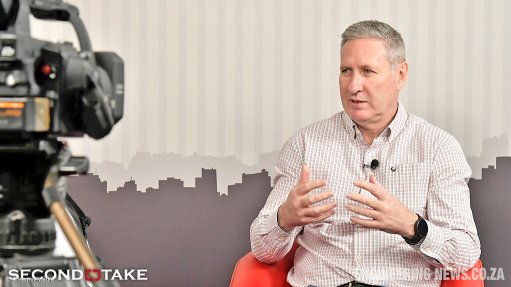Cybersecurity as the cornerstone of sustainable AI
This article has been supplied and will be available for a limited time only on this website.
By: Richard Ford - Group CTO at Integrity360
The G20’s focus on AI for Sustainable Development highlights that the success of AI-driven innovation will depend on the strength of the digital trust behind it – and the scope of AI’s increasing integration into almost every facet of society really drives that point home. From climate forecasting and precision farming to financial inclusion and smart infrastructure, AI is helping nations unlock new efficiencies and social value as much as it is doing for you and me as individuals. But unsecured AI poses a systemic sovereign development risk.
In South Africa, where AI adoption intersects with critical sectors such as energy, agriculture, and public services, security is the currency of progress. Every dataset, model, and automation layer has to operate within a framework of integrity and accountability. Without that assurance, development outcomes and growth trajectories become worryingly – perhaps even dangerously – unpredictable.
AI systems that optimise resources or forecast economic trends rely fully on the quality and security of their data. When protected, they deliver stronger impact, helping achieve climate goals, improve access to services, and support fair growth. When they’re left exposed, they create systemic risks that undermine trust and the very foundations of sustainable development.
From enabler to risk multiplier
Every AI system relies on data inputs that shape its decisions, from predicting energy demand to allocating healthcare resources. If that data is tampered with or biased due to weak cybersecurity controls, the AI’s outputs become unreliable. The result is flawed decisions that can amplify inequality rather than reduce it.
In practical terms, a manipulated AI model, say, used to optimise agricultural yields could misallocate water resources and directly or indirectly distort market prices, with lasting economic and environmental effects. In the private sector, IBM’s 2025 Cost of a Data Breach Report found data breaches linked to AI-driven analytics systems are already costing South African companies millions – not only in remediation but in lost trust and reputational damage. IBM’s report also reveals that South African organisations still face one of the longest breach detection timelines globally (averaging 255 days) signalling that investment in digital transformation continues to outpace advances in cybersecurity resilience.
AI can accelerate sustainable development, but only if it’s governed securely, transparently, and accountably.
AI security starts with governance
AI security is part of governance, a framework that brings together technology, compliance, and ethics. Building sustainable AI means creating systems with accountability, transparency, and ongoing oversight at their core.
Data integrity
Sustainable AI begins with reliable data. Whether used for climate research or financial inclusion, data must be accurate, protected, and trustworthy. Strong cybersecurity (including encryption, identity management, and continuous monitoring) protects that integrity. Once data is compromised, every decision built on it becomes flawed or compromised.
Accountability and POPIA
South Africa’s Protection of Personal Information Act (POPIA) sets strict rules for how organisations handle personal data. AI increases this responsibility through its large-scale use of data and third-party tools. Breaches in AI systems can bring serious legal, financial, and reputational consequences. POPIA compliance must therefore expand into fully fledged AI governance, ensuring that personal data is managed securely and ethically – whether its purpose is large or small.
Boardroom oversight
AI governance begins at the top. Boards and executives need to ensure their investment in AI-driven sustainability is matched by equal investment in cybersecurity and oversight. Leadership decisions today will decide whether AI strengthens resilience or creates new and compounding risks.
Security by design: From pilot to policy
Sustainable AI governance works best when security is built in from the start and shared across the entire organisation. For leaders, this means shifting from reacting to risks to designing systems where security is a built-in strength.
● Embed security-by-design in every AI project from the pilot phase. Security architecture should evolve alongside model design and data pipelines.
● Establish cross-functional governance committees comprising Legal, Risk, and IT leaders to align AI deployment with compliance and ethical standards.
● Ensure visibility across all AI models and data flows, including third-party or partner systems. Shadow AI initiatives often introduce the highest levels of risk.
● Invest in awareness and training to help employees understand AI’s risks and responsibilities. A culture of digital accountability strengthens every layer of defence.
When organisations adopt these principles, cybersecurity shifts from being a cost of doing business to a catalyst for trust, innovation, and competitive advantage.
The African opportunity
Nowhere is the link between secure governance and sustainable AI more critical than in Africa. With a young population, rapid urbanisation, and expanding digital infrastructure, the continent has an extraordinary opportunity to use AI to address structural challenges, from water management to healthcare delivery.
The same technologies that can drive inclusion and resilience also carry immense risk when left unprotected. Secure AI enables reliable climate data, equitable public service delivery, and fair access to financial systems. Insecure AI, by contrast, threatens to widen divides and destabilise progress at a time where it is needed most. The choice facing African leaders is therefore strategic, not technical: security is the path to sustainability.
The G20’s renewed emphasis on AI governance should serve as a call to action for South Africa’s policymakers and business leaders. The future of sustainable development depends on the ability to balance innovation with protection and agility with accountability.
The foundations we secure today will determine how far AI can take us tomorrow. It’s a bright future too precious to jeopardise.
Article Enquiry
Email Article
Save Article
Feedback
To advertise email advertising@creamermedia.co.za or click here
Comments
Press Office
Announcements
What's On
Subscribe to improve your user experience...
Option 1 (equivalent of R125 a month):
Receive a weekly copy of Creamer Media's Engineering News & Mining Weekly magazine
(print copy for those in South Africa and e-magazine for those outside of South Africa)
Receive daily email newsletters
Access to full search results
Access archive of magazine back copies
Access to Projects in Progress
Access to ONE Research Report of your choice in PDF format
Option 2 (equivalent of R375 a month):
All benefits from Option 1
PLUS
Access to Creamer Media's Research Channel Africa for ALL Research Reports, in PDF format, on various industrial and mining sectors
including Electricity; Water; Energy Transition; Hydrogen; Roads, Rail and Ports; Coal; Gold; Platinum; Battery Metals; etc.
Already a subscriber?
Forgotten your password?
Receive weekly copy of Creamer Media's Engineering News & Mining Weekly magazine (print copy for those in South Africa and e-magazine for those outside of South Africa)
➕
Recieve daily email newsletters
➕
Access to full search results
➕
Access archive of magazine back copies
➕
Access to Projects in Progress
➕
Access to ONE Research Report of your choice in PDF format
RESEARCH CHANNEL AFRICA
R4500 (equivalent of R375 a month)
SUBSCRIBEAll benefits from Option 1
➕
Access to Creamer Media's Research Channel Africa for ALL Research Reports on various industrial and mining sectors, in PDF format, including on:
Electricity
➕
Water
➕
Energy Transition
➕
Hydrogen
➕
Roads, Rail and Ports
➕
Coal
➕
Gold
➕
Platinum
➕
Battery Metals
➕
etc.
Receive all benefits from Option 1 or Option 2 delivered to numerous people at your company
➕
Multiple User names and Passwords for simultaneous log-ins
➕
Intranet integration access to all in your organisation




















